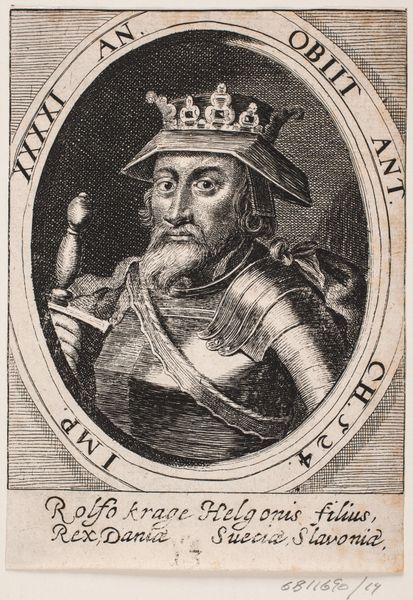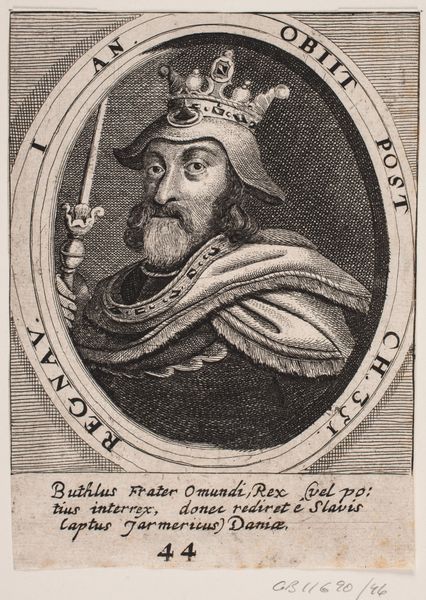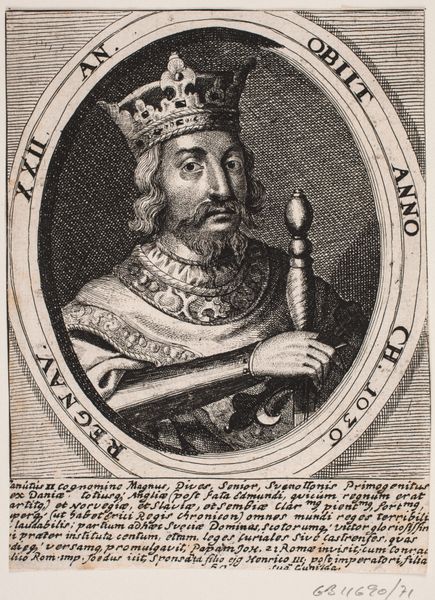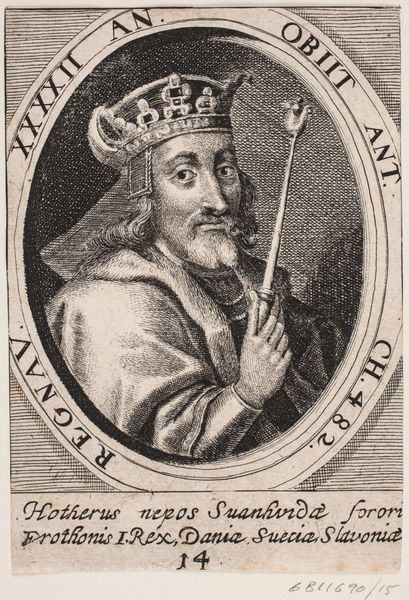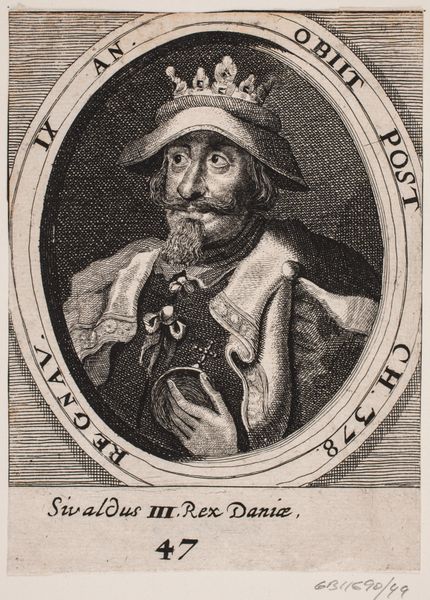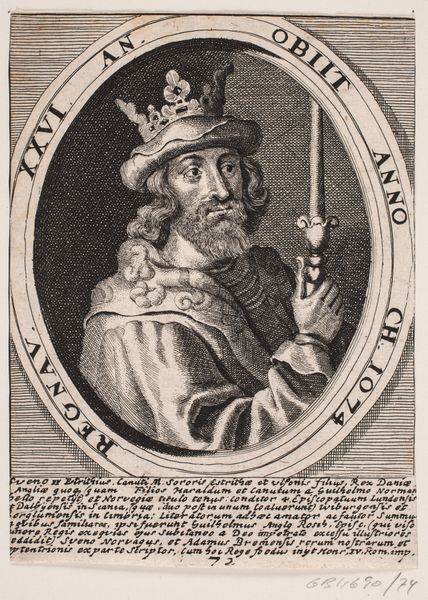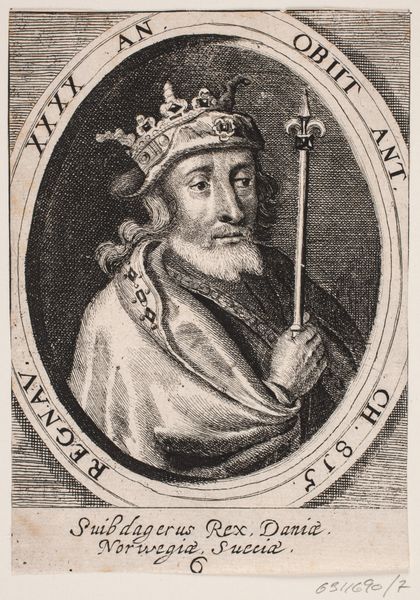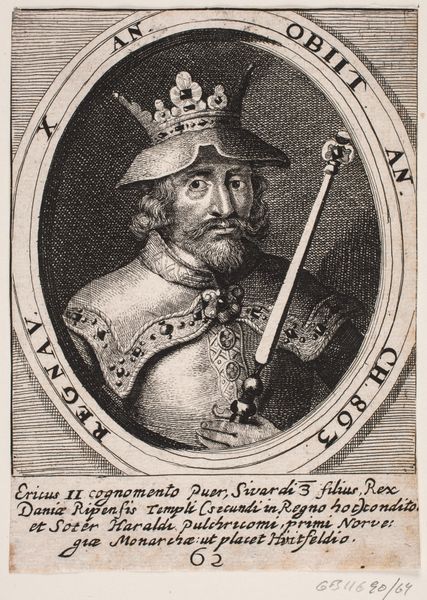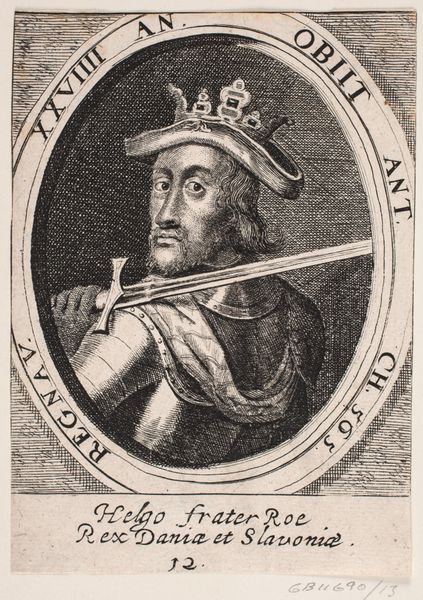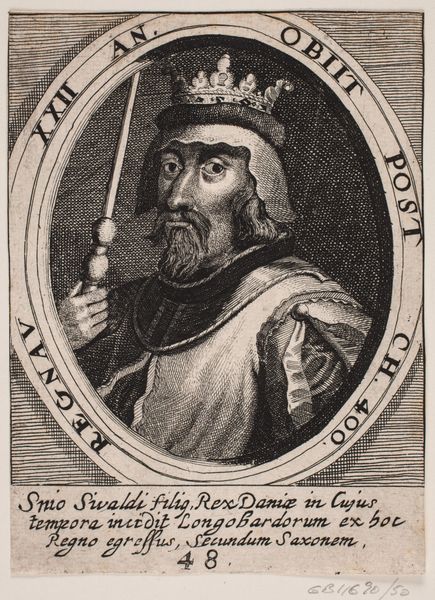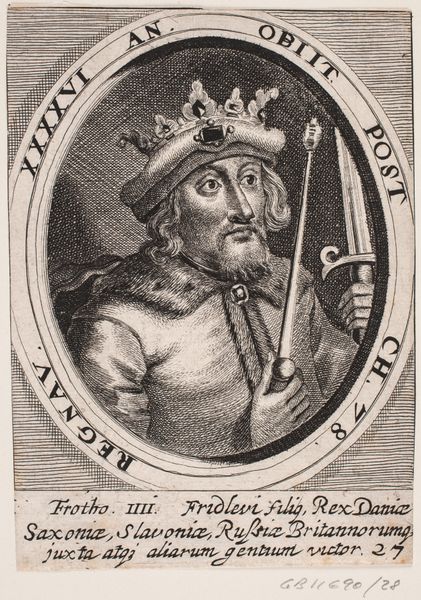
print, metal, engraving
#
baroque
# print
#
metal
#
history-painting
#
engraving
Dimensions: 140 mm (height) x 100 mm (width) (bladmaal)
Curator: This engraving, titled "Magnus den Gode," was created anonymously around 1646. It’s a fascinating example of Baroque printmaking on metal. Editor: My first impression is the formality of it all. The framing oval, the crisp lines, the regal attire... It speaks of power carefully constructed and projected. Curator: Absolutely. Let’s consider the context. Here we see Magnus the Good, a Norse king who ruled Norway and Denmark in the 11th century. This print would have circulated within specific circles, contributing to the shaping—and perhaps the manipulation—of his historical image. The portrait participates in the fashioning of a specific notion of power. Notice how the Latin inscription frames him as a legitimate heir and ruler. Editor: Indeed, but there's a certain constructedness to this "legitimacy." He’s depicted with a globe and wearing a fur-trimmed robe, markers intended to assert dominance. Given the social and political turmoil in Europe during the Baroque era, what specific audiences was this image targeting and how did it function for those audiences? Was it meant to consolidate power, perhaps for the Danish monarchy who then controlled Norway? Curator: Good point! This piece must be approached as a political object. It speaks to dynastic anxieties and aspirations. Furthermore, there is this inherent tension in claiming access to "goodness." How do we account for a moral positioning onto positions of power in light of colonization and gendered violence? Editor: The detail in the engraving is stunning—you can practically feel the texture of the fur. The deliberate detail serves to lend authenticity and reinforces the visual statement about status. What are your thoughts about its status as an artistic object? Was the objective solely historical documentation, or were aesthetic principles also prioritized? Curator: That distinction is often blurred, especially in historical works. While aiming to inform, artworks such as this functioned also to instill cultural values, including notions of leadership and national identity. Also we need to acknowledge that our reading now is far removed from those original aims, since in a modern-day museum setting the engraving faces other aesthetic principles, viewing circumstances and interpretation frameworks that might be hard to reconcile. Editor: The conversation is part of what is fascinating: the object as both art and record. Curator: It reminds us that historical imagery is never neutral; it’s always doing ideological work.
Comments
No comments
Be the first to comment and join the conversation on the ultimate creative platform.
